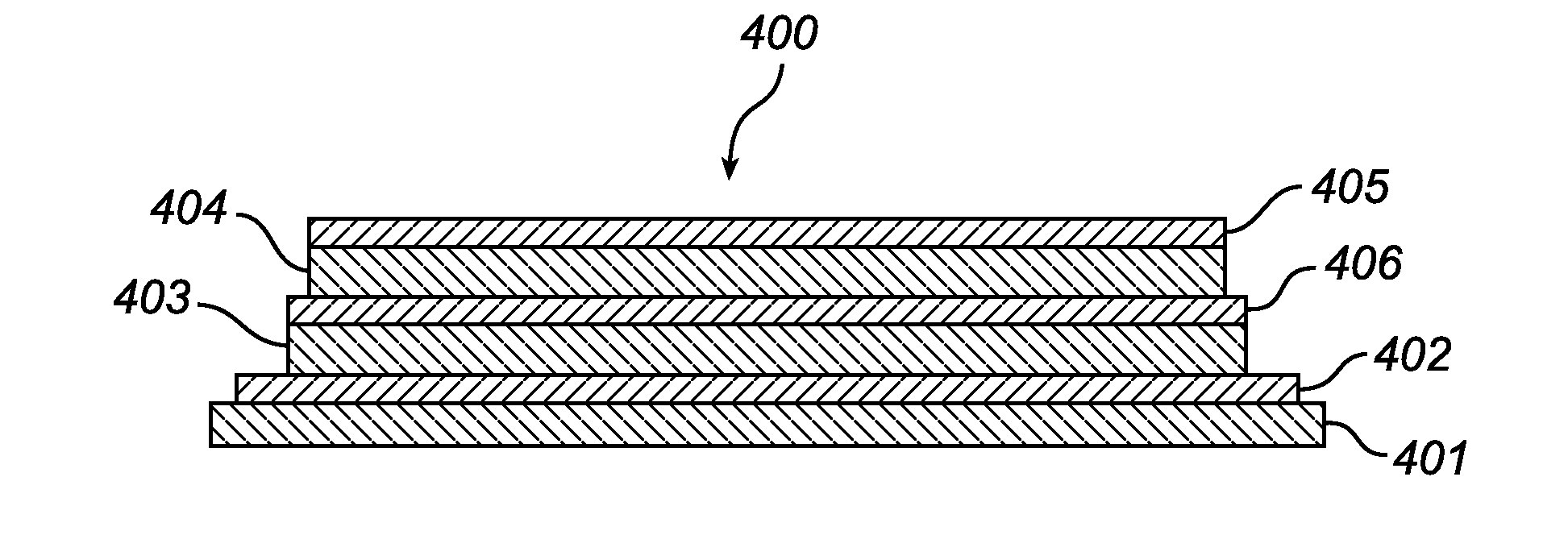Organic light emitting device
a light-emitting device and organic technology, applied in the direction of thermoelectric devices, organic semiconductor devices, other domestic articles, etc., can solve the problem of a large portion of light remaining trapped in the organic layer or the glass substrate, and achieve the effect of improving the light-emitting coupling efficiency
- Summary
- Abstract
- Description
- Claims
- Application Information
AI Technical Summary
Benefits of technology
Problems solved by technology
Method used
Image
Examples
Embodiment Construction
[0039]The present inventors have found that the light out coupling efficiency of an OLED can be improved by providing a layer adjacent the emissive layer, typically a layer located between the emissive layer and the anode, such as a hole transport layer, with an embossed periodic surface structure or by patterning said layer. It has also been found that, alternatively or additionally to the charge transport layer being patterned or provided with said periodic surface structure, the light out coupling efficiency of an OLED can be improved by incorporating an alignment layer between said charge transport layer and said emissive layer, which alignment layer promotes alignment of the optical dipoles of molecules of said light emissive layer towards a common preferred direction.
[0040]FIG. 1 illustrates in cross-section an organic light-emitting device according to the present invention. The OLED 100 is arranged on a conventional substrate 101 for bottom-emissive configuration, e.g. a gla...
PUM
 Login to View More
Login to View More Abstract
Description
Claims
Application Information
 Login to View More
Login to View More - R&D
- Intellectual Property
- Life Sciences
- Materials
- Tech Scout
- Unparalleled Data Quality
- Higher Quality Content
- 60% Fewer Hallucinations
Browse by: Latest US Patents, China's latest patents, Technical Efficacy Thesaurus, Application Domain, Technology Topic, Popular Technical Reports.
© 2025 PatSnap. All rights reserved.Legal|Privacy policy|Modern Slavery Act Transparency Statement|Sitemap|About US| Contact US: help@patsnap.com


